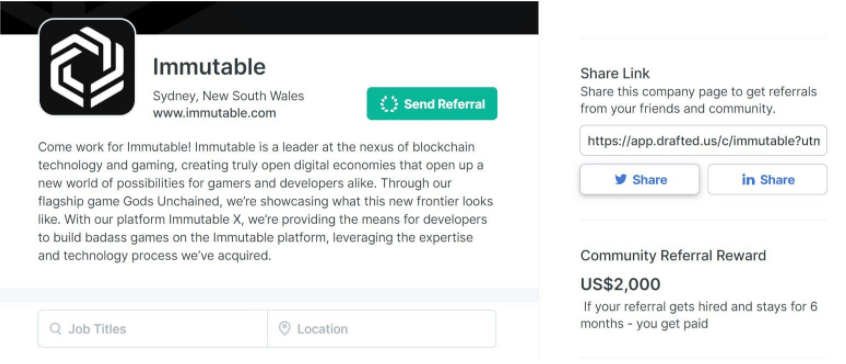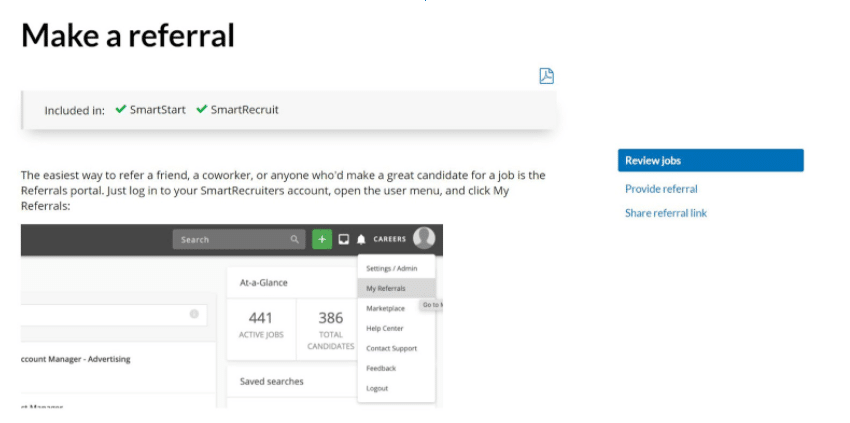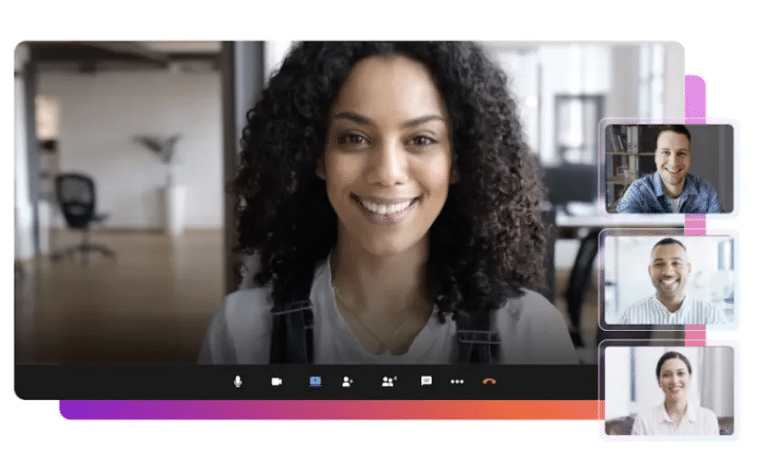Highlights:
- An employee referral program encourages employees to refer qualified candidates for the job.
- Employee referral programs increase the likelihood of finding top talent while reducing the cost of hiring and onboarding.
- Organizations can easily launch a referral program by convincing upper management, setting goals, identifying incentives, and using a referral program software.
Most recruiters know that it can be difficult to find the right talent for the position. Around 40% of human capital leaders believe that their organization has struggled with talent scarcity.
Of course, every organization wants to attract the best employees to succeed in the long term. But it can be difficult to stand out among numerous organizations in job ads and recruitment sites.
The good news is that creating an effective employee referral program is one way you can attract the best possible candidates for your team.
How to launch your own employee referral program? Here, we’ll introduce you to all the steps that you need to know.
What is an employee referral program?
An employee referral program is a recruiting strategy.
Here, employers encourage their employees to refer qualified candidates for the job. In exchange, employees can receive rewards for successfully referring a friend, a family member, or anyone to a specific role.
For example, Immutable’s employee referral program lets people earn a referral bonus worth $2,000 when their referral gets hired and stays for six months.

(Image Source: Immutable.com)
Employee referral programs can bring a lot of perks to your organization. Since candidates are more likely to trust the advice of their friends, family, or someone they know personally, they are more likely to accept the offer and have a positive perception of the business.
What are the benefits of an employee referral program?
Here are some of the notable perks that you need to consider when launching your referral program.
Referrals increase the likelihood of finding capable hires
Referrals have higher retention
Referred employees have a higher retention rate because they are more familiar with the culture and values of the organization. After all, they have been evaluated by their peers who work in your organization prior to submitting their application. They may also be recommended to the job because the referrer knows that they would fit right in. In fact, 49% of companies with referral programs found that referred employees stay at the company longer.
Referrals are a cost-effective recruitment strategy
Employee referral programs can be cost-effective. According to Prevue HR, hiring through referrals is 55% faster. By empowering employees to help source candidates, companies won’t need to rely too heavily on recruitment specialists. They don’t spend too much time and resources vetting resumes from jobseeker database services. Due to the reduced time to hire and improved productivity, organizations reduce costs for talent acquisition.
Referrals make it easier to fill roles
Sometimes the job requires a specific talent or skill that is limited in the market. You won’t be able to find the right candidates easily through job boards or recruitment websites. However, employees are likely acquainted with people equipped with rare skills in their professional network.
For example, mobile app developers may have attended conferences and networking events with like-minded professionals. While you may have a hard time comparing resumes and finding the right candidate, they may already know qualified professionals who can fill in for the role.
Referrals bolster employee engagement
An employee referral program gives companies an opportunity to engage with their employees. After all, employees have the ability to recommend highly qualified candidates for their team or department—and get the credit for it too.
How do employee referral programs work?
Much like a referral program for retail stores, employees that refer people get incentives or rewards. These referral bonuses are usually cash incentives that cost $1,000 to $10,000. However, other companies may offer gadgets, giveaways, and vacation experiences as potential rewards.
The reward is usually given after the referred employee is hired for a full-time role. Some employee referral programs give tiered rewards like offering 50% of the reward when the candidate passes the interview. Then, the other 50% is offered after the referred employee remains with the company for 90 days.
How to create an employee referral program
To start off, here’s the step-by-step process you can take for launching your own employee referral program.
Make it simple
To boost the participation rate, the referral process must be clear and direct. Let participants know the incentives, the step-by-step process, and how they can get their promised reward.
We highly recommend using a referral program software that can seamlessly onboard employees and their referred candidates. An alternative option is to create an online form where people can submit the necessary details and resumes of their referrals.
You can also give employees some recruitment resources such as employee testimonials, company achievements, and details on organizational benefits. Keep the “about us” page on your website updated and share your company’s vision and values there. These can help them convince their personal network to apply for the job and explain the company’s mission and values.
For example, Smartrecruiters has a dedicated page for referral program instructions. This way, employees and their friends know how to make a successful referral.

Determine goals and objectives
How much will your referral program contribute to the organization? How can you tell whether the budget allocated for referral programs is worth it? Determine the appropriate metrics for monitoring the success of your employee referral program. Set a reasonable time limit for achieving these goals so that the employees have enough time to find referrals.
Here are some sample goals and objectives that you can consider:
- Get at least 15% of employees to participate in the employee referral program
- Get 30% more qualified candidates for available positions
- Decrease time to hire by 2 weeks
- Boost employee retention rate by 25%
Identify incentives
Of course, people won’t participate in the referral program if the incentives aren’t promising.
Brainstorm potential rewards that can motivate employees such as referral bonuses, valuable prizes, or more leave credits. If you have a limited budget, you can host giveaways or offer interesting rewards (i.e. free spa day or restaurant promo).
Before finalizing your referral reward, we highly recommend getting in touch with employees and asking their opinions. That way, you won’t waste money on expensive rewards that won’t generate results. An employee engagement tool can help make the complex process of soliciting and structuring employee feedback quite easy. You may also be able to discover affordable rewards upon receiving their feedback.
For example, San Mateo County is offering employees a $500 incentive to refer qualified candidates. Since cash is practical and useful, these referral bonuses may motivate employees to refer people in their network.

(Image Source: smcgov.org)
Announce the program to the organization
Employees won’t join your referral program if they don’t know it exists. As such, you’ll need to announce its launch to everyone in the organization.
You can create a PDF file, a social media post, or a video to spread information about it. You can also host a webinar to explain the referral program instructions. Post the reference materials on the internal site or mass email everyone on the team.
For example, Wellstar created an Instagram post to announce the launch of their employee referral program.

(Image Source: Wellstar’s Instagram Page)
To keep it in the back of people’s minds, create a referral program poster and display it in areas where people frequent such as the break room or meeting room. This is a subtle way you can remind people to keep recommending people in their network.
Make referrals a part of your company culture
Your referral program shouldn’t feel like a mere extra to your recruitment efforts. Rather, you should include it in your company’s culture and onboarding progress.
Host recruitment happy hours or get-togethers where employees can bring people that they want to refer. This is a great way for recruiters to get to know potential candidates and subtly introduce them to the perks and company culture.

To stay safe during the pandemic, you can host a virtual event to celebrate the wins of the referral program on an annual or quarterly basis. You can highlight referred employees and express your gratitude to the employees who recommended them. Tell employees the in-depth details that they need to know about the referral program.
Ready to create your own employee referral program?
An employee referral program can have a big impact on your recruitment efforts.
Your employees likely have a network of like-minded professionals. They’re not only qualified, but they also align with your brand’s values and culture.
Launching your own employee referral program is easy with the proper resources and tools. With referral program software, you can even build and launch your own referral program within minutes.
Here’s hoping that you’ll be able to attract and recruit top talent faster and simpler.
Originally published May 15, 2021, updated Nov 20, 2023





